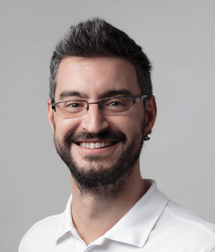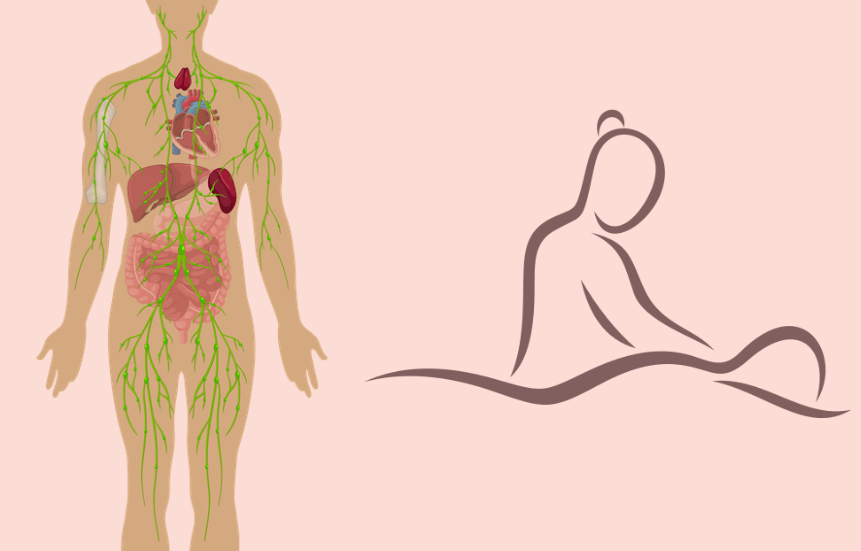What are the problems that may require lymphatic drainage therapy? And what can be the benefits of the treatment?
Each of the following application techniques allows you to obtain benefits, based on the pathology taken into consideration.
Let's see together how lymphatic drainage therapy treatments are carried out in Ticino.
General information on lymphatic drainage:
Lymphatic drainage (LDM or lymphatic drainage) is a specific technique, mainly used in the treatment of edema.
Edema is caused by an accumulation of fluids, which leads to the increase in one or more parts of the body:
It is defined as lymphatic drainage, as lymph is a liquid essentially made up of water, fats, proteins, electrolytes, lymphocytes, etc. which circulate in the lymphatic system, a complex network made up of lymphatic vessels and lymphatic tissue.
The objective of manual lymphatic drainage largely consists in a mechanical elimination of excess liquids present in the tissue, and of the elements existing in them.
An accumulation of fluid occurs frequently and can be physiological, for example following prolonged standing.
It is considered pathological when this symptom is accompanied by cardiac, renal, hepatic insufficiency and vascular insufficiency.
For example:
As happens in the palpation examination, the appearance of the "pit sign" indicates the presence of edema, as it shows the persistence of a visible imprint.
It is therefore important during treatment to avoid any type of skin irritation (rubbing, slipping, pressure), which could cause reactive hyperemia
It is therefore necessary to avoid the use of oils and creams that can cause them to lose adhesion with the skin surface.
Lymphatic drainage should not cause pain.
Problems that may require manual lymphatic drainage:
Venous insufficiency
Vasculitis Claudication (pain in one or more lower limbs when walking); Constitutional phlebostasis; Circulatory disorders affecting the microcirculation; Vascular surgery interventions (for example saphenectomies which are operations to eliminate the saphenous vein).
Joint and muscle trauma
Connective tissue pathologies
Scleroderma; Lipedemi; Localized lipoedema.
Manual drainage benefits
The benefits of lymphatic drainage are:
elimination of excess fluids; muscle relaxation; immunological action, will strengthen resistance to infections; toning, increasing capillary circulation; regenerating, it will help rehydrate dehydrated areas; regulation of the autonomic nervous system; promotes the healing of ulcers and bedsores in diabetic patients; post-surgical healing; pain reduction; reduction of chronic inflammation.
Contraindications of manual lymphatic drainage
Absolute contraindications
Deep vein thrombosis, thrombophlebitis; Acute inflammation; General or local infections (and presence of a feverish state); Untreated malignant tumors; Edema of the limbs caused by right heart failure; Kidney or liver malfunctions.
Relative contraindications
Treated malignant tumors; Chronic inflammation; Hypotension; Functional disorders of the thyroid gland (hypothyroidism/hyperthyroidism); Neurovegetative dystonias; Precancerous skin; Pregnancy; Heart failure; Hypotension and hypertension; Acute bronchitis; Women during the menstrual cycle; Allergies.
How lymphatic drainage treatment is used in physiotherapy
Lymphatic drainage can be physiological, manual or mechanical.
Physiological
It is a type of lymphatic drainage that our body carries out naturally through the lymphatic circulation system.
It may undergo slowdowns or interruptions, but it depends on various factors, such as the person's lifestyle, age, physical activity, etc.
Mechanical
Mechanical lymphatic drainage is a particular technique in which specific machinery is used.
For example, pressotherapy uses pillows that cover the patient, emitting jets of air and exerting pressure on the area to be treated.
The advantage of this therapy is that it can be carried out at the home of the person being treated.
Manual Drainage uses various manual treatment techniques named after those who created them (Vodder, Leduc, Földi, Casley-Smith).
Generally the most used therapies are Leduc and Vodder.
Emil Vodder method It is performed by massaging the tissues with light circular and oval pressures.
The technique must be performed via proximal-distal sequences (from the closest point to the farthest point), the movements must be delicate, painless, and must not cause redness to avoid breaking the capillaries.
If performed correctly, the massage will have results at the superficial tissue level without acting on the muscles.
Vodder lymphatic drainage consists of a combination of circular, rotating and oval movements, small and large, deep and superficial, in which the skin is pushed without sliding over it.
To be effective, the technique must be performed correctly, respecting both the direction of flow of the lymph towards the lymph node stations and the pressure in the various manoeuvres, adapted to the patient and the characteristics of the tissue.
Albert Leduc method This method is based on a small number of movements.
The maneuvers are composed of concentric circular movements.
The pressure used is light (it can be performed with the simple pressure of the fingers or even the thumbs), thus allowing a depression of the skin, stretching it on the deeper planes.
This lengthening promotes the absorption of the lymphatic capillaries.
The maneuvers are repeated several times in the same region.
The techniques vary depending on the condition to be treated.
It is based on two principles:
Reabsorption of lymph by the lymphatic network in the region where the edema is present. Drain excess lymphatic fluid to a region where it does not overload.
The main maneuvers of the Leduc method are those of "recall", carried out to empty the evacuation collectors and favor the drainage of liquid, and "reabsorption", to allow the elimination of proteins.
Non-compressive bandages are used on the areas to be treated, starting from the peripheral area to the central one.
The lymphatic drainage bandage
Compression with multi-layer bandage is an integral part of the treatment of edema.
Special bandages are applied to the affected part to prevent it from swelling in the hours following the physiotherapy treatment.
The choice of material and the application technique must be adapted to the subject.
The action of the bandage is to stimulate lymphatic flow and promote venous drainage through muscular activity.
The pressure exerted by the bandages has a dual effect:
During rest
During muscle contraction (in activities that involve physical activity such as work, daily life and sport), it causes an increase in pressure under the bandage.
With physical movement, the edematous tissues found between the contracted muscles, which have increased in volume, and the external shell, are compressed and emptied of the liquid they contain.
Generally, following the treatment, the patient is asked to carry out some simple activities and exercises, which can be done comfortably at home.
How lymphatic drainage is recognized in physiotherapy practices in Ticino
Lymphatic lymphatic drainage therapies are recognized by the health insurance company.
How long does a lymphatic drainage session last?
The duration of a session is approximately 45 minutes, depending on the area to be treated and the method used by the physiotherapist.

